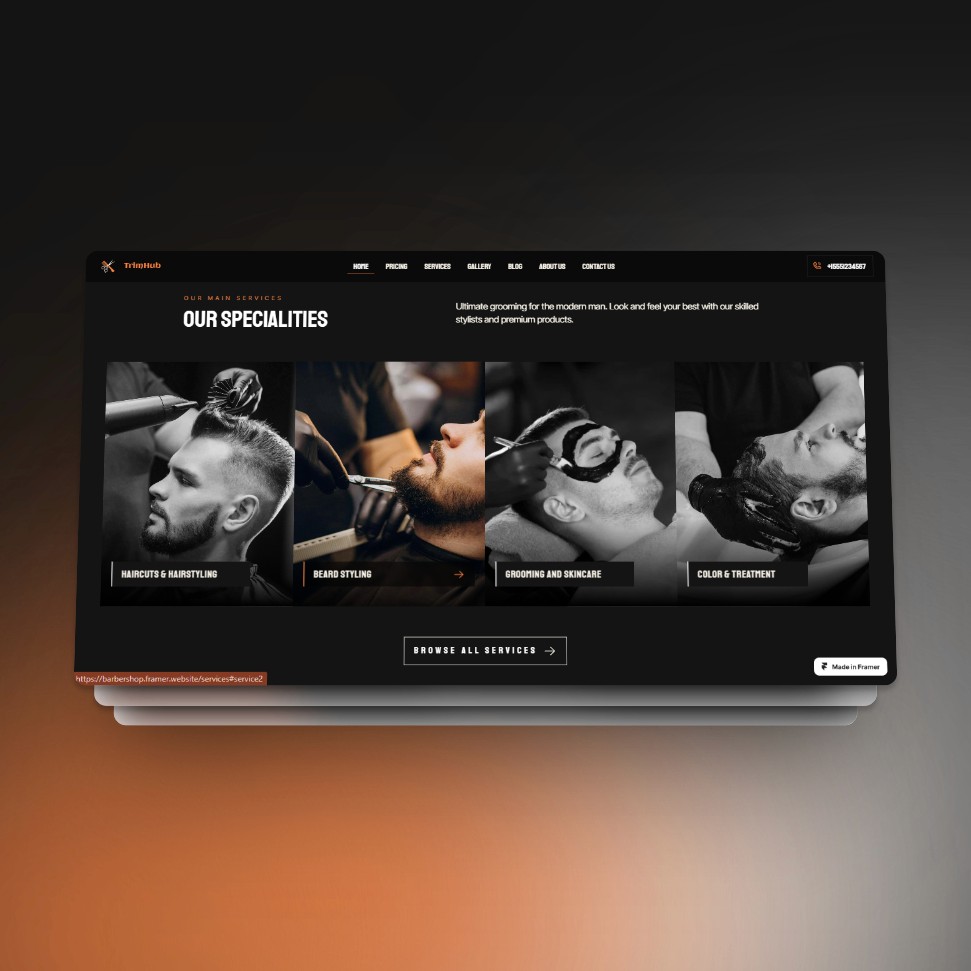Our Three Step Process
Our Three Step Process
The SaaS Startup That Mistook Features for a Product Strategy

Our Three Step Process
The SaaS Startup That Mistook Features for a Product Strategy

A SaaS startup came to us after struggling with low user retention and poor conversion rates. They had built an incredibly feature-packed platform with dozens of advanced functionalities, assuming that adding more features would automatically attract more users. However, despite having a well-developed product, their sign-ups were stagnant, trial users weren’t converting into paid customers, and churn rates were alarmingly high. Their internal team was convinced the problem was a lack of features, so they kept adding more—only to find that user engagement remained low. They needed a real product strategy that focused on solving user problems rather than just stacking features.
The Challenge
The root problem was clear: they were building features, not solutions.
Their onboarding process was overwhelming, bombarding new users with too many options instead of guiding them toward quick wins.
Their product lacked a clear core value proposition—users weren’t sure why they needed it or how it solved their problem.
Marketing efforts focused on features rather than highlighting real-world benefits and use cases.
As a result, trial users would sign up, get confused, and leave without ever experiencing the product’s true value.
Our Approach
Instead of cramming in more features, we helped them refocus their strategy on user experience, positioning, and value delivery.
1. Identifying the Core Value Proposition
We conducted user interviews and behavior analysis to pinpoint what truly mattered:
Identified the top three features that actually delivered value.
Simplified the product messaging to clearly communicate its primary benefits.
Redesigned the landing page and onboarding flow to focus on solving a specific pain point instead of listing features.
2. Fixing User Onboarding for Higher Activation Rates
We streamlined the user onboarding experience by:
Implementing an interactive product tour that guided users step by step toward their first success.
Introducing quick-start templates to remove friction for new users.
Sending behavior-driven email sequences to encourage engagement based on how users interacted with the platform.
3. Shifting from Feature-Driven to Outcome-Driven Marketing
Instead of promoting features like “AI-powered automation”, we reframed the messaging to highlight user outcomes:
“Save 10+ hours per week with automated workflows.”
“Reduce manual errors by 70% with smart AI predictions.”
“Onboard your team in minutes, not days.”
We also created case studies and testimonials that showcased real businesses benefiting from the product, making it easier for potential customers to see the value.
The Results
Within 60 days, the SaaS startup saw massive improvements:
✅ Trial-to-paid conversion rate jumped from 8% to 22%—a 175% increase.
✅ User retention improved by 48% as onboarding became frictionless.
✅ Demo requests increased by 2.5x due to the new value-focused marketing strategy.
✅ Customer support tickets decreased by 35%, as users now understood how to use the product effectively.
Key Takeaways
More features don’t mean more success. The real key to SaaS growth is delivering clear value, simplifying onboarding, and focusing on user outcomes. Instead of overwhelming users with options, guide them toward meaningful results.
If your SaaS product has all the features but low engagement, poor retention, or a leaky conversion funnel, we can help turn it around.
The Challenge
The root problem was clear: they were building features, not solutions.
Their onboarding process was overwhelming, bombarding new users with too many options instead of guiding them toward quick wins.
Their product lacked a clear core value proposition—users weren’t sure why they needed it or how it solved their problem.
Marketing efforts focused on features rather than highlighting real-world benefits and use cases.
As a result, trial users would sign up, get confused, and leave without ever experiencing the product’s true value.
Our Approach
Instead of cramming in more features, we helped them refocus their strategy on user experience, positioning, and value delivery.
1. Identifying the Core Value Proposition
We conducted user interviews and behavior analysis to pinpoint what truly mattered:
Identified the top three features that actually delivered value.
Simplified the product messaging to clearly communicate its primary benefits.
Redesigned the landing page and onboarding flow to focus on solving a specific pain point instead of listing features.
2. Fixing User Onboarding for Higher Activation Rates
We streamlined the user onboarding experience by:
Implementing an interactive product tour that guided users step by step toward their first success.
Introducing quick-start templates to remove friction for new users.
Sending behavior-driven email sequences to encourage engagement based on how users interacted with the platform.
3. Shifting from Feature-Driven to Outcome-Driven Marketing
Instead of promoting features like “AI-powered automation”, we reframed the messaging to highlight user outcomes:
“Save 10+ hours per week with automated workflows.”
“Reduce manual errors by 70% with smart AI predictions.”
“Onboard your team in minutes, not days.”
We also created case studies and testimonials that showcased real businesses benefiting from the product, making it easier for potential customers to see the value.
The Results
Within 60 days, the SaaS startup saw massive improvements:
✅ Trial-to-paid conversion rate jumped from 8% to 22%—a 175% increase.
✅ User retention improved by 48% as onboarding became frictionless.
✅ Demo requests increased by 2.5x due to the new value-focused marketing strategy.
✅ Customer support tickets decreased by 35%, as users now understood how to use the product effectively.
Key Takeaways
More features don’t mean more success. The real key to SaaS growth is delivering clear value, simplifying onboarding, and focusing on user outcomes. Instead of overwhelming users with options, guide them toward meaningful results.
If your SaaS product has all the features but low engagement, poor retention, or a leaky conversion funnel, we can help turn it around.
A SaaS startup came to us after struggling with low user retention and poor conversion rates. They had built an incredibly feature-packed platform with dozens of advanced functionalities, assuming that adding more features would automatically attract more users. However, despite having a well-developed product, their sign-ups were stagnant, trial users weren’t converting into paid customers, and churn rates were alarmingly high. Their internal team was convinced the problem was a lack of features, so they kept adding more—only to find that user engagement remained low. They needed a real product strategy that focused on solving user problems rather than just stacking features.
The Challenge
The root problem was clear: they were building features, not solutions.
Their onboarding process was overwhelming, bombarding new users with too many options instead of guiding them toward quick wins.
Their product lacked a clear core value proposition—users weren’t sure why they needed it or how it solved their problem.
Marketing efforts focused on features rather than highlighting real-world benefits and use cases.
As a result, trial users would sign up, get confused, and leave without ever experiencing the product’s true value.
Our Approach
Instead of cramming in more features, we helped them refocus their strategy on user experience, positioning, and value delivery.
1. Identifying the Core Value Proposition
We conducted user interviews and behavior analysis to pinpoint what truly mattered:
Identified the top three features that actually delivered value.
Simplified the product messaging to clearly communicate its primary benefits.
Redesigned the landing page and onboarding flow to focus on solving a specific pain point instead of listing features.
2. Fixing User Onboarding for Higher Activation Rates
We streamlined the user onboarding experience by:
Implementing an interactive product tour that guided users step by step toward their first success.
Introducing quick-start templates to remove friction for new users.
Sending behavior-driven email sequences to encourage engagement based on how users interacted with the platform.
3. Shifting from Feature-Driven to Outcome-Driven Marketing
Instead of promoting features like “AI-powered automation”, we reframed the messaging to highlight user outcomes:
“Save 10+ hours per week with automated workflows.”
“Reduce manual errors by 70% with smart AI predictions.”
“Onboard your team in minutes, not days.”
We also created case studies and testimonials that showcased real businesses benefiting from the product, making it easier for potential customers to see the value.
The Results
Within 60 days, the SaaS startup saw massive improvements:
✅ Trial-to-paid conversion rate jumped from 8% to 22%—a 175% increase.
✅ User retention improved by 48% as onboarding became frictionless.
✅ Demo requests increased by 2.5x due to the new value-focused marketing strategy.
✅ Customer support tickets decreased by 35%, as users now understood how to use the product effectively.
Key Takeaways
More features don’t mean more success. The real key to SaaS growth is delivering clear value, simplifying onboarding, and focusing on user outcomes. Instead of overwhelming users with options, guide them toward meaningful results.
If your SaaS product has all the features but low engagement, poor retention, or a leaky conversion funnel, we can help turn it around.










Other Projects
Other Case Studies
Check our other project case studies with detailed explanations
Other Projects
Other Case Studies
Check our other project case studies with detailed explanations
Other Projects
Other Case Studies
Check our other project case studies with detailed explanations


